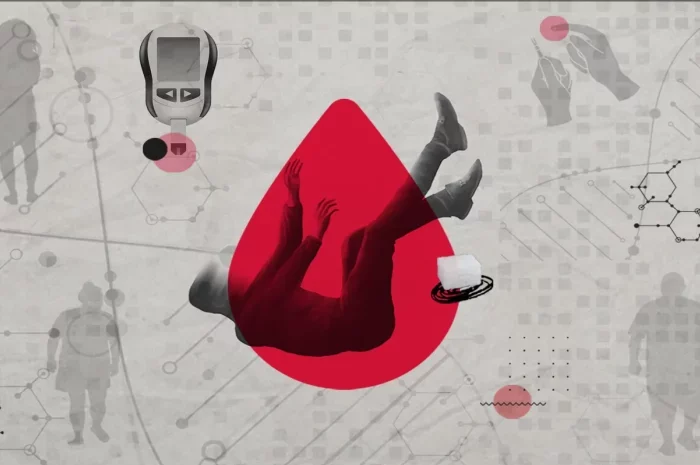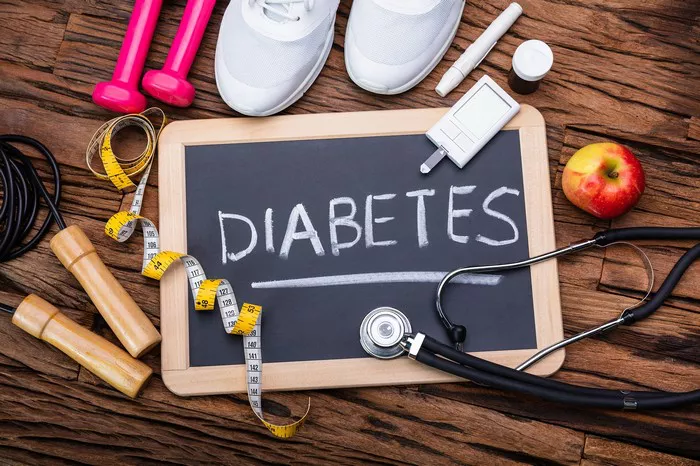Diabetic Ketoacidosis (DKA)
Diabetic Ketoacidosis (DKA) is a severe complication that occurs when the body cannot utilize glucose for energy due to insufficient insulin. Instead, the body begins to break down fat for fuel, leading to the production of ketones, which are acidic. When ketone levels rise in the bloodstream, they can cause the blood to become acidic, leading to DKA. This condition is more common in individuals with Type 1 diabetes but can also occur in those with Type 2 diabetes under certain circumstances.
Key Signs and Symptoms of DKA
- High Blood Sugar Levels: One of the primary indicators of DKA is a significantly elevated blood glucose level, often above 250 mg/dL.
- Presence of Ketones: High levels of ketones in the urine or blood are a hallmark of DKA. Ketone testing kits can help in early detection.
- Frequent Urination and Thirst: The body attempts to eliminate excess glucose through urine, leading to dehydration and increased thirst.
- Abdominal Pain and Nausea: Abdominal discomfort, nausea, and vomiting are common as the body’s acid levels rise.
- Fruity-Scented Breath: The presence of ketones can cause a distinctive fruity odor in the breath.
- Confusion and Fatigue: As DKA progresses, individuals may experience confusion, lethargy, and weakness.
- Rapid Breathing: Kussmaul respiration, characterized by deep and rapid breathing, occurs as the body tries to expel excess carbon dioxide.
Managing DKA
Early recognition and prompt treatment of DKA are crucial. If you suspect DKA, seek emergency medical care immediately. Treatment typically involves:
- Fluid Replacement: Intravenous fluids help rehydrate the body and dilute excess glucose.
- Electrolyte Replacement: DKA can lead to imbalances in potassium, sodium, and chloride levels, which need correction.
- Insulin Therapy: Continuous insulin infusion helps lower blood glucose and halt ketone production.
Prevention of DKA
- Regular Monitoring: Consistent monitoring of blood glucose and ketone levels is essential, especially during illness or periods of high stress.
- Adherence to Treatment: Following prescribed insulin regimens and adjusting doses as necessary can prevent the onset of DKA.
- Education and Awareness: Understanding the signs and symptoms of DKA and knowing when to seek medical help can save lives.
Severe Hypoglycemia
Hypoglycemia occurs when blood glucose levels drop below normal, typically below 70 mg/dL. Severe hypoglycemia is a critical condition that requires immediate attention, as it can lead to unconsciousness, seizures, and even death if not treated promptly.
Key Signs and Symptoms of Severe Hypoglycemia
- Shakiness and Trembling: Low blood sugar can cause physical tremors and a feeling of shakiness.
- Sweating: Profuse sweating, even in cool environments, is a common symptom.
- Hunger: An intense feeling of hunger can arise suddenly.
- Irritability and Anxiety: Hypoglycemia can cause mood changes, including irritability and anxiety.
- Dizziness and Confusion: Low glucose levels affect brain function, leading to dizziness, confusion, and difficulty concentrating.
- Blurred Vision: Vision may become blurred or impaired.
- Loss of Consciousness: In severe cases, individuals may lose consciousness or have seizures.
Managing Severe Hypoglycemia
Immediate action is necessary to treat severe hypoglycemia:
- Consume Fast-Acting Carbohydrates: If the person is conscious and able to swallow, consuming 15-20 grams of fast-acting carbohydrates (e.g., glucose tablets, juice, regular soda) can quickly raise blood sugar levels.
- Glucagon Injection: If the person is unconscious or unable to swallow, a glucagon injection should be administered. Glucagon kits are essential for individuals with diabetes and their caregivers.
- Seek Medical Attention: If symptoms do not improve or if severe hypoglycemia recurs, seek emergency medical help.
Prevention of Severe Hypoglycemia
- Consistent Monitoring: Regular blood glucose checks help in identifying trends and preventing drops.
- Balanced Diet: Eating regular meals and snacks that include carbohydrates, proteins, and fats can help maintain stable blood sugar levels.
- Medication Management: Adjusting insulin doses based on activity levels, meals, and blood sugar readings can prevent hypoglycemia.
- Education: Being aware of the symptoms and having an action plan in place can mitigate the risks associated with severe hypoglycemia.
Hyperosmolar Hyperglycemic State (HHS)
Hyperosmolar Hyperglycemic State (HHS) is a serious condition characterized by extremely high blood sugar levels, often exceeding 600 mg/dL, without significant ketone production. It is more common in individuals with Type 2 diabetes, especially older adults.
Key Signs and Symptoms of HHS
- Extremely High Blood Sugar Levels: Blood glucose levels in HHS are typically above 600 mg/dL.
- Severe Dehydration: Excessive urination leads to profound dehydration, dry mouth, and extreme thirst.
- Altered Mental State: Confusion, drowsiness, and even coma can occur as the condition progresses.
- Neurological Symptoms: Seizures, muscle weakness, and difficulty speaking may arise.
- Fever: Elevated body temperature without signs of infection is possible.
Managing HHS
HHS requires immediate medical attention:
- Hospitalization: Individuals with HHS often require hospitalization for intensive treatment.
- Fluid Replacement: Intravenous fluids are administered to combat dehydration.
- Electrolyte Correction: Electrolyte imbalances are corrected through IV fluids and medications.
- Insulin Therapy: Insulin is used to lower blood glucose levels gradually.
Prevention of HHS
- Routine Monitoring: Regular blood sugar monitoring, particularly during illness or periods of stress, is crucial.
- Hydration: Staying well-hydrated can help prevent the onset of HHS.
- Medication Adherence: Taking diabetes medications as prescribed and making necessary adjustments with medical guidance can prevent HHS.
See also: What’s the Most Common Urinary Symptom in Diabetes Mellitus
Conclusion
Understanding and recognizing the signs of a diabetic emergency—DKA, severe hypoglycemia, and HHS—are essential skills for individuals with diabetes and their caregivers. Prompt identification and treatment of these conditions can prevent severe complications and save lives. Regular monitoring, adherence to treatment plans, and education on the symptoms and management of these emergencies are vital components of diabetes care. By staying vigilant and informed, individuals with diabetes can effectively manage their condition and reduce the risk of life-threatening emergencies.
Related topics:
What’s Late-Onset Type 1 Diabetes
What’s the Looping in Diabetes
What’s the Mechanisms and Pathophysiology of Type 1 Diabetes


























